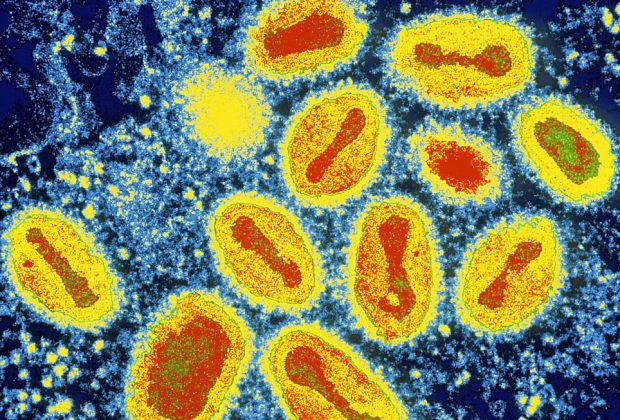Smallpox Basic Information
Smallpox is a serious, contagious, and sometimes fatal infectious disease. There is no specific treatment for smallpox disease, and the only prevention is vaccination. The pox part of smallpox is derived from the Latin word for “spotted” and refers to the raised bumps that appear on the face and body of an infected person.
There are two clinical forms of smallpox. Variola major is the severe and most common form of smallpox, with a more extensive rash and higher fever. There are four types of variola major smallpox: ordinary (the most frequent type, accounting for 90% or more of cases); modified (mild and occurring in previously vaccinated persons); flat; and hemorrhagic (both rare and very severe). Historically, variola major has an overall fatality rate of about 30%; however, flat and hemorrhagic smallpox usually are fatal. Variola minor is a less common presentation of smallpox, and a much less severe disease, with death rates historically of 1% or less.
Smallpox outbreaks have occurred from time to time for thousands of years, but the disease is now eradicated after a successful worldwide vaccination program. The last case of smallpox in the United States was in 1949. The last naturally occurring case in the world was in Somalia in 1977. After the disease was eliminated from the world, routine vaccination against smallpox among the general public was stopped because it was no longer necessary for prevention.
Smallpox is caused by the variola virus that emerged in human populations thousands of years ago. Except for laboratory stockpiles, the variola virus has been eliminated. However, in the aftermath of the events of September and October, 2001, there is heightened concern that the variola virus might be used as an agent of bioterrorism. For this reason, the U.S. government is taking precautions for dealing with a smallpox outbreak.
Generally, direct and fairly prolonged face-to-face contact is required to spread smallpox from one person to another. Smallpox also can be spread through direct contact with infected bodily fluids or contaminated objects such as bedding or clothing. Rarely, smallpox has been spread by virus carried in the air in enclosed settings such as buildings, buses, and trains. Humans are the only natural hosts of variola. Smallpox is not known to be transmitted by insects or animals.
A person with smallpox is sometimes contagious with onset of fever (prodrome phase), but the person becomes most contagious with the onset of rash. At this stage the infected person is usually very sick and not able to move around in the community. The infected person is contagious until the last smallpox scab falls off.
Side Effects
A vaccine, like any medicine, could possibly cause serious problems, such as severe allergic reactions. The risk of smallpox vaccine causing serious harm, or death, is very small.
Mild to Moderate Problems
Mild rash, lasting 2-4 days.
Swelling and tenderness of lymph nodes, lasting 2-4 weeks after the blister has healed.
Fever of over 100 degrees fahrenheit (about 70% of children, 17% of adults) or over 102 degrees Fahrenheit (about 15%-20% of children, under 2% of adults).
Secondary blister elsewhere on the body (about 1 per 1,900).
Moderate to Severe Problems
Serious eye infection, or loss of vision, due to spread of vaccine virus to the eye.
Rash on entire body (as many as 1 per 4,000).
Severe rash on people with eczema (as many as 1 per 26,000).
Encephalitis (severe brain reaction), which can lead to permanent brain damage (as many as 1 per 83,000).
Severe infection beginning at the vaccination site (as many as 1 per 667,000, mostly in people with weakened immune systems).
Death (1-2 per million, mostly in people with weakened immune systems).
For every million people vaccinated, between 14 and 52 could have a life-threatening reaction to smallpox vaccine.
People who come in direct contact with the vaccination site of a vaccinated person, or with materials that have touched the site, can also have a reaction. This is from exposure to virus from the vaccination site.
Who Should Not Be Vaccinated
There are too many conditions and risk factors to list accurately on this page. Please consult the Smallpox Vaccine Information Statement.

